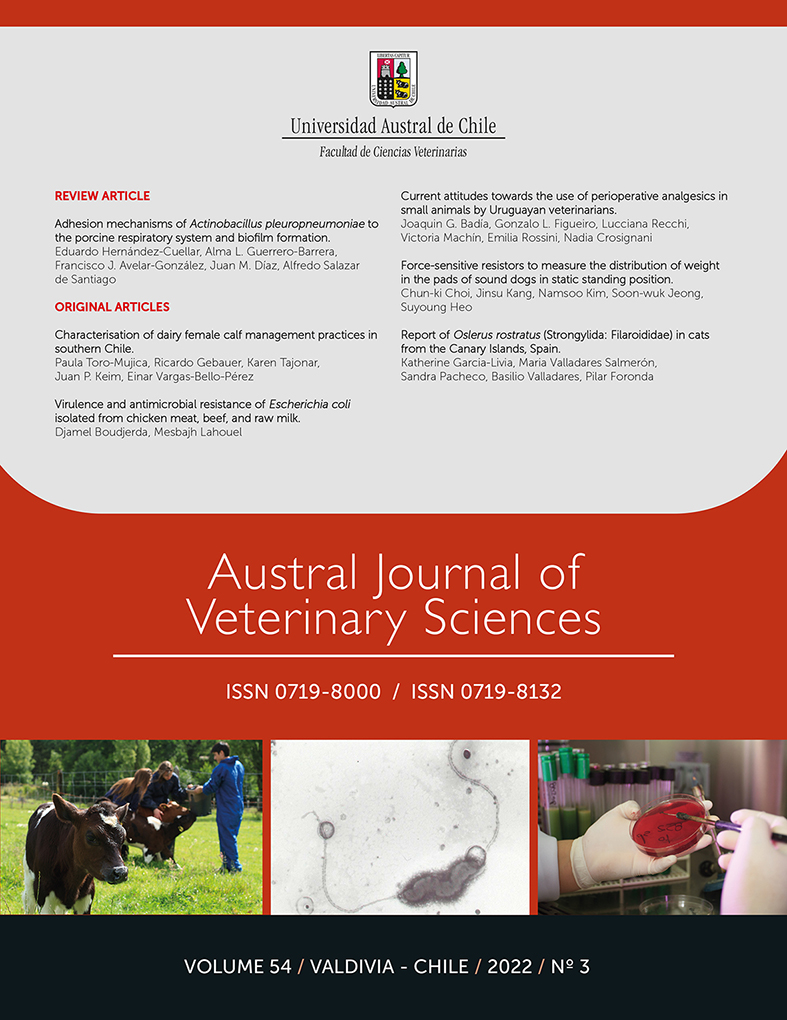Characterisation of dairy female calf management practices in southern Chile
Contenido principal del artículo
Resumen
The objective of this study was to characterise husbandry and technical-productive practices at the calf rearing stage in dairy farms in Los Lagos Region, southern Chile. A face-to-face survey was applied to 22 dairy farms in Los Lagos Region in 2017. All farms performed artificial calf rearing under either of two systems: total barn confinement (48%) or a mixed system that considers the first stage with confinement and the second stage in open-air paddocks (52%). More than half (52%) of the farms supplied fresh colostrum to the calf from its dam and the rest of the farms used bottle or oesophageal tube. Only 30% of the farms evaluated colostrum quality using colostrometer (densimeter) or refractometer. After the colostrum supply, milk replacers, waste milk, or a mixture of both were used for calf feeding. Most of the farms (66.7%) did not have automated milk-feeding systems and used bottles (88.9%) and buckets (11.1%) instead. On average, calves were handled by 1.5 caretakers (SD: 0.63) of which 63.4% (SD: 40.2) were men. The average age for caretakers was 43.9 years (SD: 12.7), with 23.8% being less than 35 years old. Overall, results from this study can be used to identify key managements that could improve calves’ rearing productive traits.

